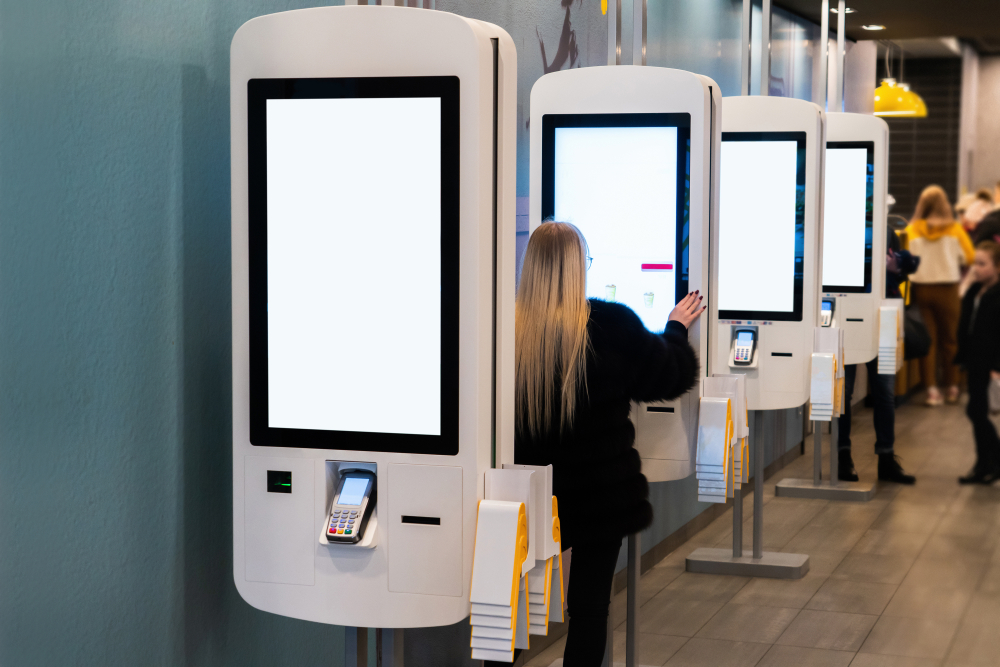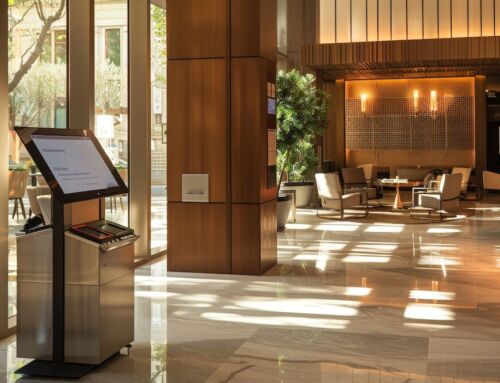Self-service kiosks represent a booming tech sector in their own right. Forecasts predict that the global market for kiosks will more than double in value by 2028, at which point it will be worth more than $50bn.
There are many reasons why kiosks are proving so popular across such a broad and diverse range of industries. But one of the most persuasive arguments for adopting kiosks applies across the board, whether you run a shop, a restaurant, an office building, a hospital or any number of other types of premises.
Kiosks have already earned a reputation for making operations more smooth and efficient. Here are three ways they make that happen.
Reduce queues and increase throughput
Let’s start with the headline benefit of kiosks that surely everyone has heard by now – their much-vaunted ability to bust queues and get people moving.
This is most obvious in customer-facing industries like retail and hospitality, where shorter wait times not only mean happier customers but also lead to an increase in sales volumes. A great example of this can be seen in supermarkets, one of the first retail sectors to really embrace self-checkout.
Whereas staffed checkouts in supermarkets have one queue per till, the self-service section has one queue for multiple kiosks. That not only means people are waiting less, but it also increases the number of transactions taking place at any given moment of time, by a factor of eight, 10, 12 or more to one. Higher throughput in terms of customers closing transactions is clearly good for business as it means more transactions are possible per day.
Improving the flow of people through premises is beneficial even when it doesn’t have a direct financial impact. Airports, for example, have enthusiastically adopted automated passport kiosks (and with it encouraged national authorities to start issuing e-passports for easier scanning) precisely because it speeds up border checks. In this kind of example, a better passenger/customer experience might not boost transaction volumes, but it does ease a common pain point.
Increase average order value
Customer value optimisation (CVO) is an area of sales and marketing strategy that looks at ways of maximising how much your business gets out of every customer. Or, to put it another way, it looks at ways to increase how much each customer spends, whether that means per sale or via repeat custom.
What we do know is that kiosks can have a very obvious positive impact on value per sale. Famously in the QSR sector, major brands like McDonalds and Starbucks reported up to 30% increases in average order values after introducing self-service kiosks to handle customer orders and payments.
Why? Some of it is to do with the fact that kiosks can be programmed to be better at up-selling and cross-selling. Especially with the advent of AI, kiosks can nowadays make highly targeted, highly personalised recommendations based on swathes of sales and customer data, increasing the likelihood of the customer saying yes to spending a little more.
But it’s also partly down to the fact that, when left to their own devices, people will feel the freedom to treat themselves a little more. Like going large in a fast food joint without worrying what the person you’re giving the order to might think.
Free staff to concentrate on other tasks
Most organisations would agree that human interaction between staff and their customers or patrons is integral to the quality of service they provide. But the question is what kind of interaction carries most value for your business?
You might, for example, say that closing a sale is the most important interaction there can be. But once a customer makes their mind up to buy, processing the transaction is actually pretty mechanical. Until the arrival of self-service payment options, businesses had little choice but have staff fulfilling this function. In some cases, doing nothing but sitting and ringing through sales all day.
This is by no means the most efficient approach for a couple of reasons. One, especially in larger operations like supermarkets and big box retail, you have to employ a lot of cashiers to keep up with demand. The amount spent on wages for these roles eats into budget that could otherwise be spent on higher skilled, higher value roles, such as merging sales and service roles to put the emphasis more on customer relationships, or employing retail analysts to focus on continuous improvement.
By putting purchase completion in the hands of the customer with self-service kiosks, you create room to focus human resource on optimising your business.




